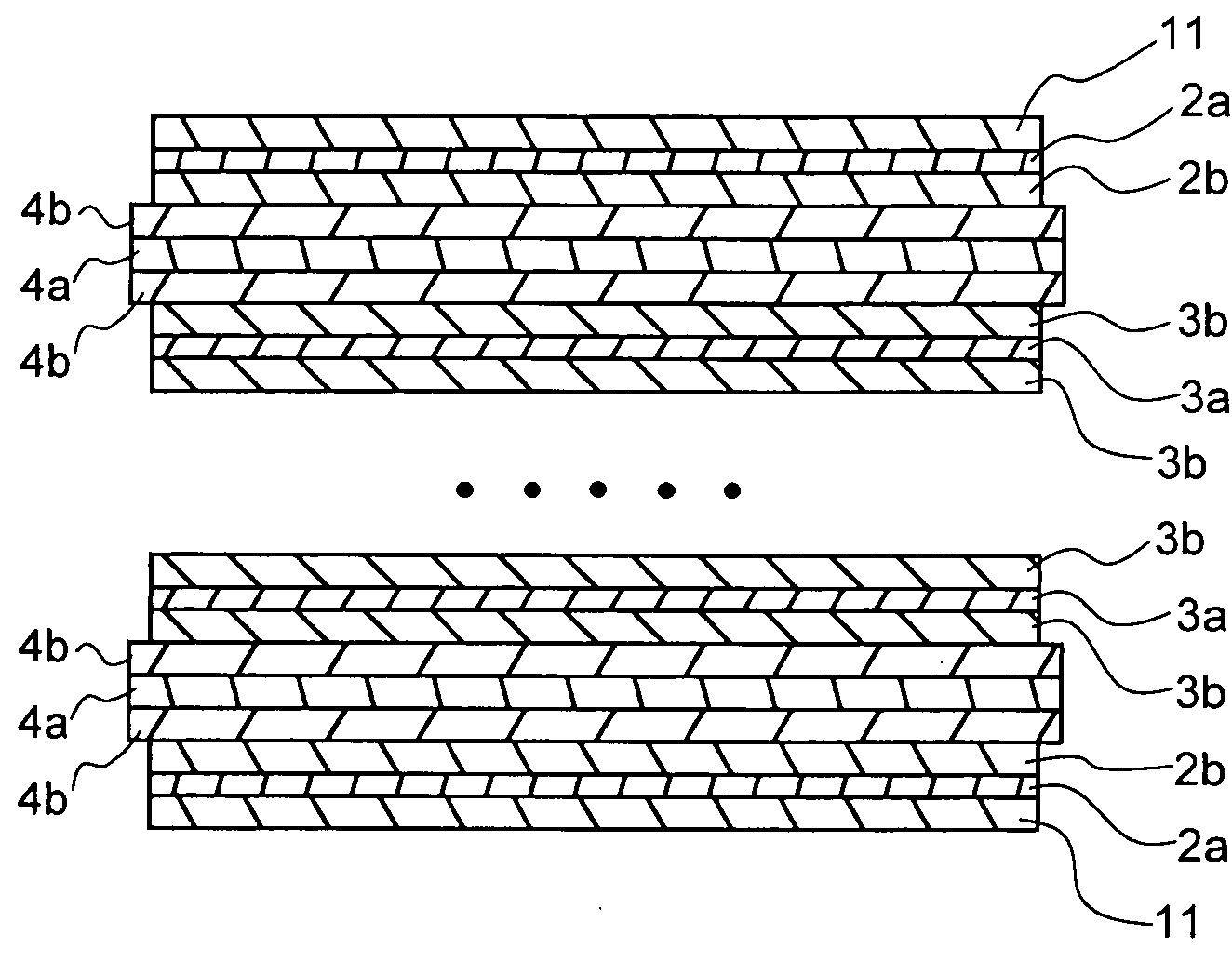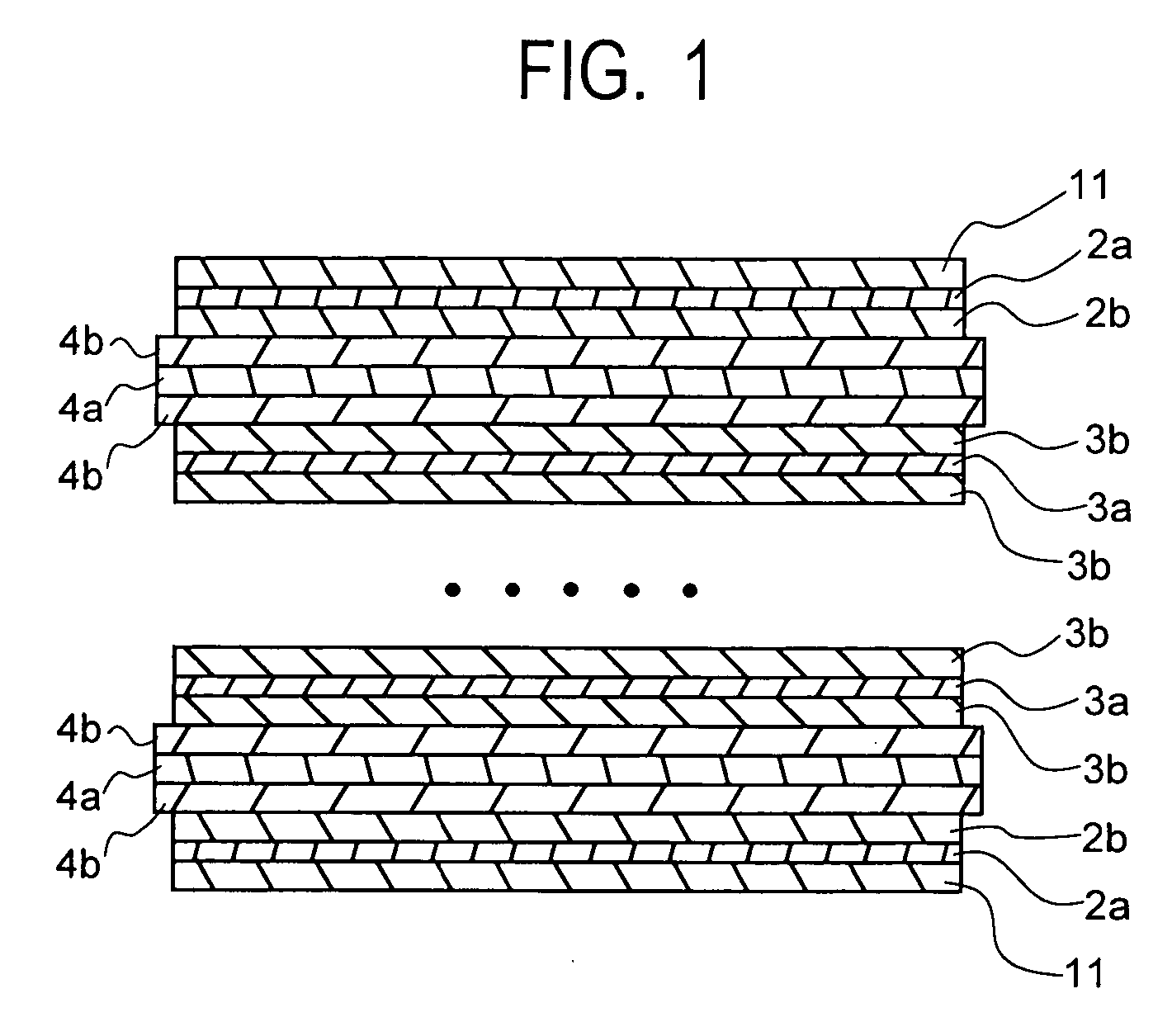Lithium secondary battery
a secondary battery and lithium-ion battery technology, applied in the direction of non-aqueous electrolyte cells, cell components, sustainable manufacturing/processing, etc., can solve the problems of rapid temperature rise of the battery, the battery itself is thermally runaway, and the battery taking this measure alone encounters a limit, so as to improve the self-security function and sacrifice the characteristics of the battery
- Summary
- Abstract
- Description
- Claims
- Application Information
AI Technical Summary
Benefits of technology
Problems solved by technology
Method used
Image
Examples
example 1
[0091] A positive electrode was prepared by mixing 90 parts by weight of LiCoO2 as a positive electrode active material, 6 parts by weight of carbon black as a conductive agent, and 4 parts by weight of PVDF, Kynar 761A as a binder. The positive electrode mix was dispersed in N-methyl-2-pyrrolidone (NMP) as a solvent to form a slurry. The slurry was applied to an Al foil as a current collector and dried to complete the positive electrode.
[0092] A negative electrode was prepared by dispersing 90 parts by weight of artificial graphite powder as a negative electrode active material and 10 parts by weight of PVDF, Kynar 761A as a binder in N-methyl-2-pyrrolidone to form a slurry. The slurry was applied to a Cu foil as a current collector and dried to complete the negative electrode.
[0093] The solid electrolyte components used were: [0094] matrix polymer: Kynar 761A, [0095] polyolefin film: polyethylene (PE) H6022, 25 μm, by Asahi Chemical Co., Ltd., and [0096] film-forming liquid: 2 w...
example 2
[0102] The positive electrode active material used was LiNi0.33Mn0.33CO0.33O2. Then a laminate type solid electrolyte lithium battery was prepared as in Example 1.
example 3
[0103] To the rear surface of a positive electrode which was prepared as in Example 1, a negative electrode slurry which was prepared as in Example 1 was coated. The resulting electrodes of one side positive electrode / one side negative electrode and the separators were stacked to form the structure in which the electrodes of one side positive electrode / one side negative electrode lay as the bottom and top layers, with the negative electrode faced outside. Then a laminate type solid electrolyte lithium battery was prepared as in Example A-1.
PUM
| Property | Measurement | Unit |
|---|---|---|
| thickness | aaaaa | aaaaa |
| particle size | aaaaa | aaaaa |
| particle size | aaaaa | aaaaa |
Abstract
Description
Claims
Application Information
 Login to View More
Login to View More - R&D
- Intellectual Property
- Life Sciences
- Materials
- Tech Scout
- Unparalleled Data Quality
- Higher Quality Content
- 60% Fewer Hallucinations
Browse by: Latest US Patents, China's latest patents, Technical Efficacy Thesaurus, Application Domain, Technology Topic, Popular Technical Reports.
© 2025 PatSnap. All rights reserved.Legal|Privacy policy|Modern Slavery Act Transparency Statement|Sitemap|About US| Contact US: help@patsnap.com


